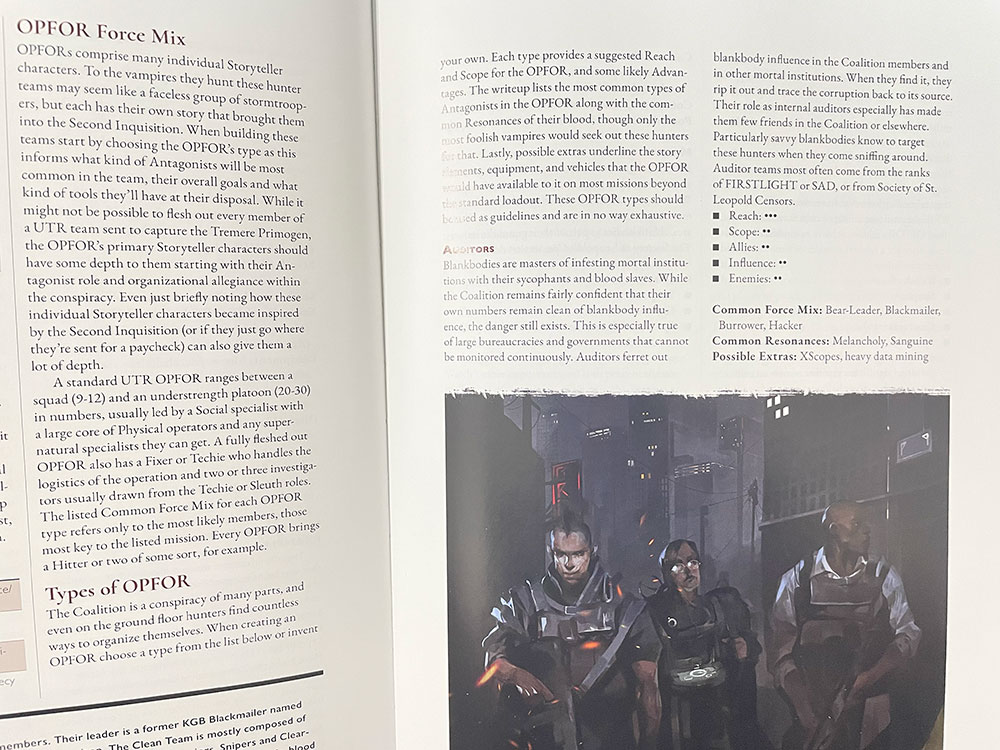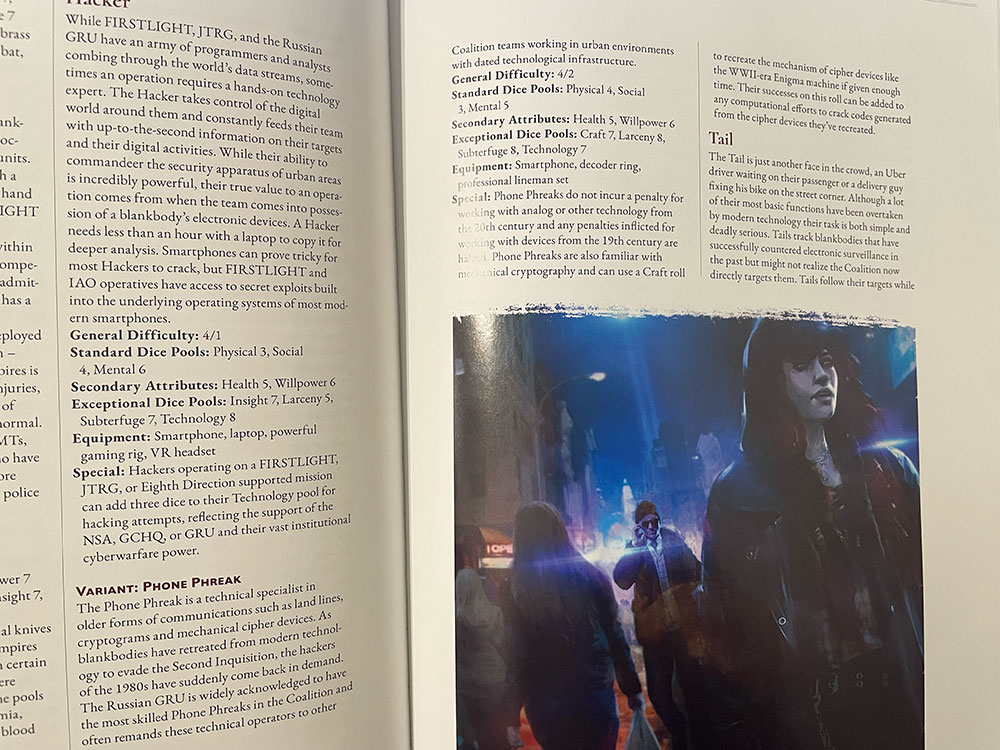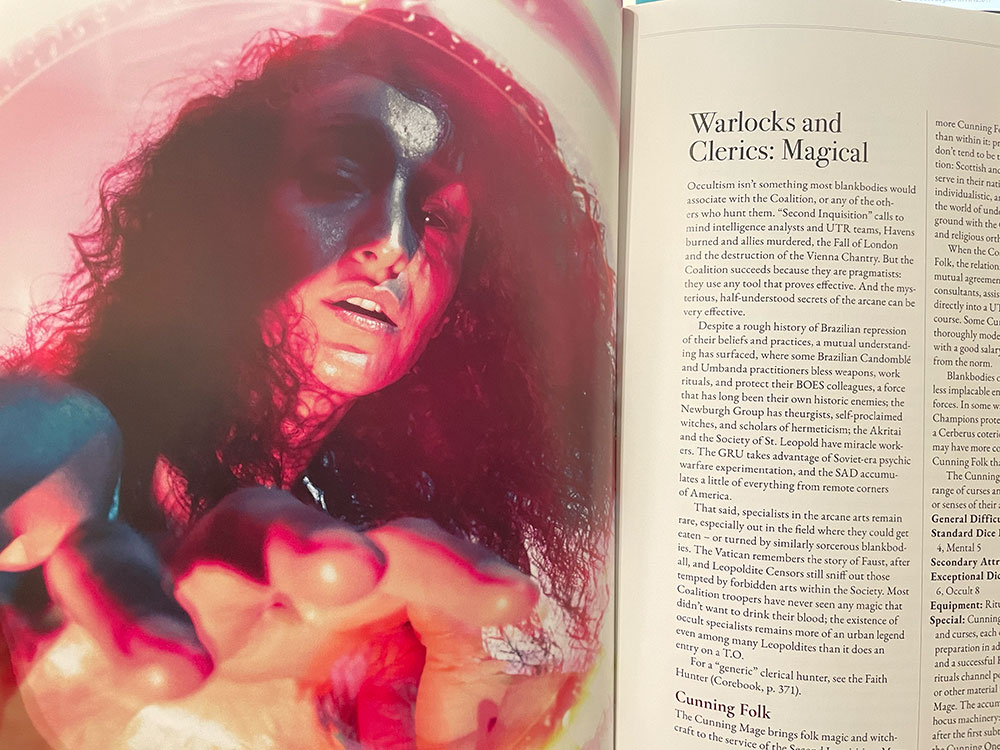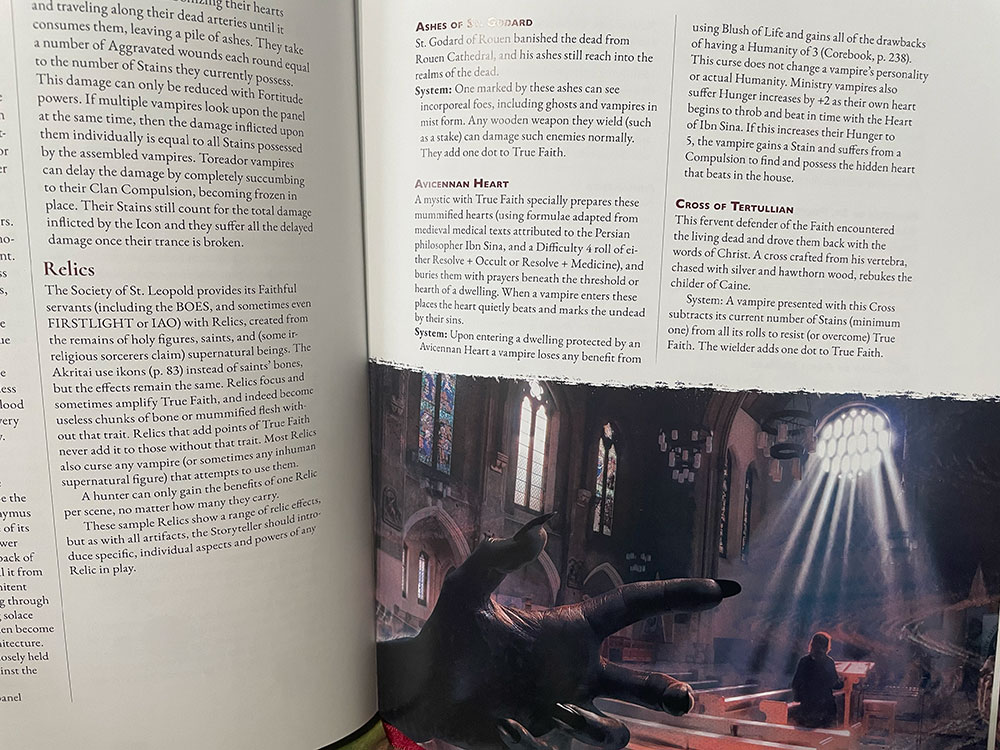 After my review of the Sabbat: The Black Hand supplement, I was really excited to dive into the Second Inquisition. The topic is usually one shrouded in secrecy in other Vampire the Masquerade media and always lurks in the background like a shark under the water, always a constant threat to the vampire protagonist. Whether it is an amateur vampire hunter that has unmasked the truth or the incredibly secret FIRSTLIGHT program backed by the American government, the Second Inquisition is an extremely real, extremely prevalent threat to vampires and their coterie.
After my review of the Sabbat: The Black Hand supplement, I was really excited to dive into the Second Inquisition. The topic is usually one shrouded in secrecy in other Vampire the Masquerade media and always lurks in the background like a shark under the water, always a constant threat to the vampire protagonist. Whether it is an amateur vampire hunter that has unmasked the truth or the incredibly secret FIRSTLIGHT program backed by the American government, the Second Inquisition is an extremely real, extremely prevalent threat to vampires and their coterie.
Second Inquisition is a supplement for the Vampire the Masquerade RPG game that supplies a huge array of new generation vampire hunters, organizations, and items to be used against players to challenge a storyteller’s group. This supplement is specifically targeted toward storytellers and won’t have many tools for player characters.
Book Overview:
The first chapter of the Second Inquisition book focuses on the different types of hunters that could be used against your players. This section includes stat blocks for different types of hunters and subsets of those types. An example of this would be the Lone Wolf type hunter who may be a Slayer subtype adding additional abilities to that enemy.
Each set of hunters are broken into different sections: Social, Mental, Physical, and Magical. Social hunters are the faces of operations and could be local community leaders leading recruiting efforts or providing sanctuary to other hunters. Mental hunters specialize in gathering and working with data to interlink and provide an edge to hunters on the ground. Physical hunters are just that, the boots on the ground taking the fight to the vampires in the night (or day). The last category of hunter is Magical. This category deals with specialist hunters that are quite rare and are in touch with occultism and the arcane arts.
The second section of chapter one deals with creating your own OPFOR (opposing forces). This includes their reach and scope and the composition of the teams. There are a massive amount of pre-made OPFOR templates to choose from that can be used to fit almost any situation in your game that may come up as well as specific named character examples.
Chapter two discusses the uses of different types of weapons by hunters and you’ll find descriptions of normal everyday firearms, explosives, and vehicles. But this also includes artifacts and special relics that have been blessed and designed to fight vampires for centuries. Some of these relics have been stolen from other monsters (such as werewolves) or have been in the vault of the church since the beginning, allowing storytellers to increase the level of threat to player characters to whatever level is needed.
Chapter three deals with the specifics of how the Second Inquisition Coalition operates. This ranges from recruitment, escalation tactics, current special projects, and operational security measures.
Chapter four contains all the different fire teams and major organizations you may see working as part of the Coalition. These range from government entities to older more experience church-based hunters from all around the globe. So no matter the setting there are hunters looking to take down your players.
Chapter five outlines the different ways to introduce the Inquisition into your chronicles. How to implement a city-wide occupation by the Coalition and what thematic elements to include. This can vary from making hunters and players play spy games against each other, to using a team-up situation, to having your players team up with different hunters that may want to eliminate special groups within the city of operations.
Using It In Your Game:
I want to preface this with my opinion that this is an essential book that any storyteller will want to have for your game. Vampire hunters are one of the biggest stereotypical threats in any sort of vampire setting, and there is no difference in Vampire the Masquerade. This supplement not only provides those hunters but fleshes out the background operations and story developments to help implement them as a living threat in the story.
The profiles that are provided in the first chapter are clearly organized and provide almost any kind of vampire hunter you can think of in any sort of school of hunting you can imagine. From high-tech information wars used to cut off vampire business interest to boots on the ground slayers and special ops teams, they are all included in this section and easily accessible. The guide to creating OPFOR also provides great rules allowing you to build your own anti-vampire group to challenge your players with.
Whenever I play an RPG game, I love seeing artifacts and relics of legend being used in a game to an awesome thematic effect. Chapter two really didn’t let me down. There are plenty of regular weapons and equipment that the vampire hunters could use in this chapter but there are also religious relics and artifacts plus advance tech designed specifically to counter vampires called X tech. Using this chapter, equipping your OPFOR with different tech can diversify them even more, tailoring it to fighting your vampire group.
The last couple of chapters in the book are more about how to implement these hunters and organizations into your storytelling. This is where the writing really shines. It is really easy to fall into the trap of having two-dimensional hunters running an amateur operation trying to hunt whatever vampire they can. This chapter makes sure you understand how the Coalition of vampire hunters operates and how to use different story seeds to implement them into your game. A couple that caught my eye were having your vampires do a prisoner exchange or even team up with hunters to kill of a mutual mortal threat in the area. This is only the tip of the iceberg with content in the last two chapters, and the writers have cast a wide and deep net to help storytellers bring these hunters and their organizations to life.
Final Thoughts:
I really enjoyed reading through this supplement. I think it is essential for any game master to add hunter organizations and the story seed of the Second Inquisition seamlessly into their game. The production quality and art are great and the information in the book is easy to find and clearly written. I, for one, will happily implement this into my Vampire game. Creating a recurring OPFOR that I can use as a sort of nemesis organization to mirror my players is really exciting. Not to mention it makes an awesome threat outside of the current storyline. If you run a Vampire the Masquerade game you need this book!
Final Score: 5 Score – A deep and wide Vampire the Masquerade supplement that is a must have for any storyteller to bring vampire hunters and their organizations into their game.
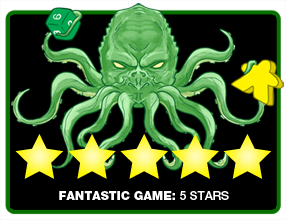 Hits:
Hits:
• Covers any type of vampire hunter/organization you could think of.
• Great story seeds to implement the Inquisition into your game.
• OPFOR rules allow for custom organizations
Misses:
• May need to lay some prep-work for current stories.








